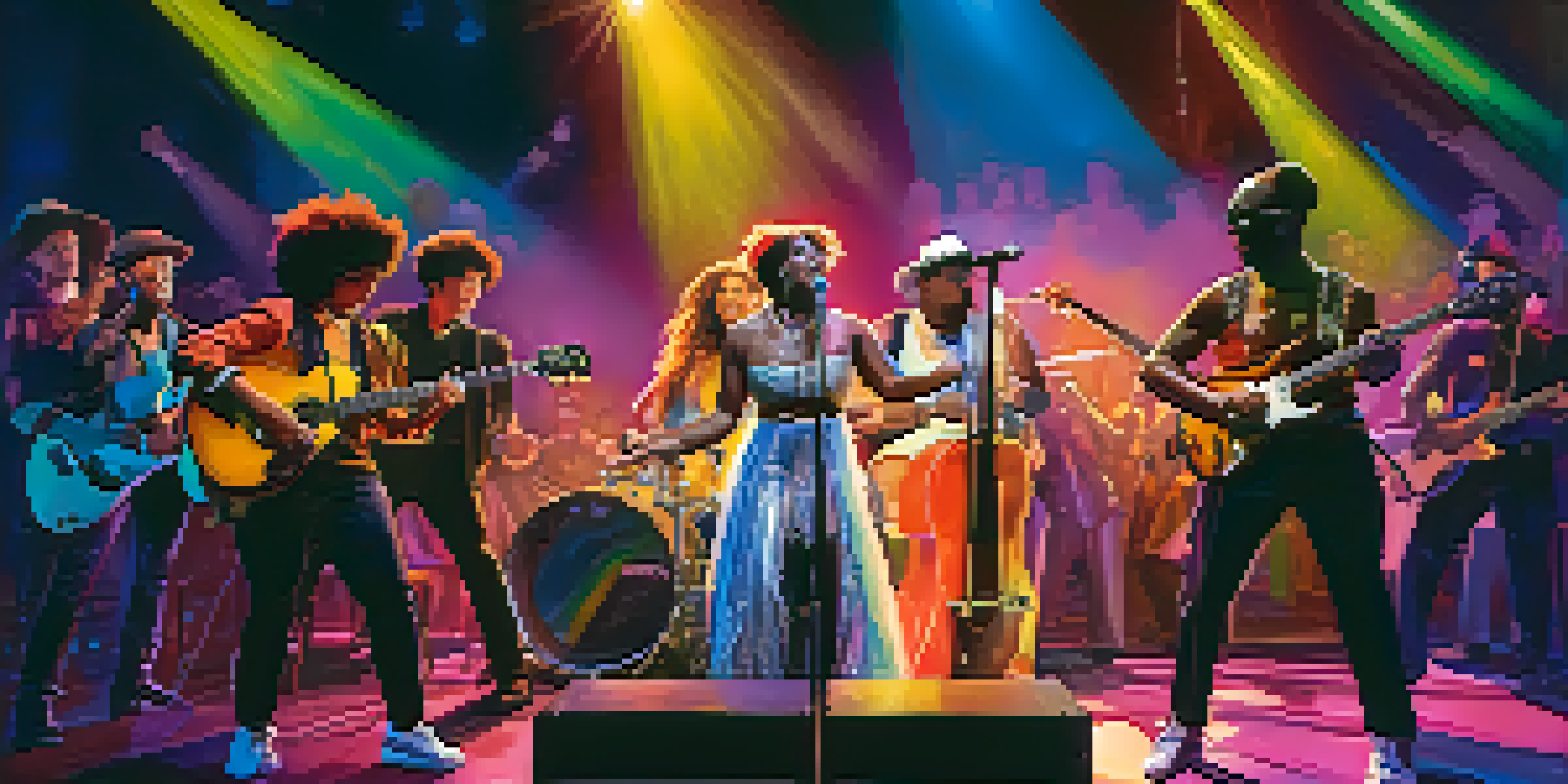Gender Identity and Its Influence on Music Genres

Understanding Gender Identity in Music Context
Gender identity refers to how individuals perceive themselves and what they call themselves, which may not necessarily align with their biological sex. In music, this concept plays a vital role in shaping artists' expressions and the genres they choose to explore. Artists often use their music to communicate their personal experiences related to gender identity, making it a powerful medium for both self-exploration and societal commentary.
Historical Overview of Gender and Music
Historically, music genres have been influenced by rigid gender norms, which dictated what was deemed acceptable for male and female artists. For example, women were often relegated to softer genres like pop or country, while rock and hip-hop were dominated by male artists. However, as society's understanding of gender evolved, artists began challenging these norms, leading to a more diverse musical landscape that embraces varied expressions of gender.
Gender Identity Shapes Music
Artists use their music to express personal experiences related to gender identity, influencing the genres they explore.
The Rise of Gender Nonconformity in Music
In recent years, there's been a remarkable rise in artists who identify as gender nonconforming or genderqueer, creating music that defies traditional genre classifications. These artists often blend elements from various genres, such as pop, rock, and electronic, creating unique sounds that reflect their individuality. By doing so, they not only expand the musical boundaries but also create spaces for listeners who relate to their experiences.
Impact of LGBTQ+ Representation in Music
LGBTQ+ representation in music has grown significantly, with many artists openly expressing their gender identities and experiences. This visibility has a profound impact on listeners, offering a sense of connection and validation. For instance, artists like Sam Smith and Lil Nas X have not only achieved commercial success but have also inspired conversations about gender identity in mainstream culture.
Challenges for Gender Diverse Artists
Despite progress, gender diverse artists face discrimination and lack of representation, which can hinder their visibility in the industry.
Genre-Specific Influences of Gender Identity
Different music genres often reflect unique aspects of gender identity. For example, punk music has historically been a space for rebellion against societal norms, allowing artists to challenge traditional gender roles. Similarly, queer pop has emerged as a vibrant genre that celebrates gender diversity while providing a platform for artists to share their stories and struggles.
How Fans Engage with Gender Identity in Music
Fans play an essential role in shaping the landscape of music related to gender identity. Many listeners find solace and community in the music that resonates with their own experiences, leading to a shared sense of belonging. This engagement not only strengthens the bond between artists and fans but also encourages more conversations around gender identity in the music world.
Future of Gender Diversity in Music
The intersection of gender identity and music is evolving, promising innovative sounds and greater acceptance of gender diversity.
Challenges Faced by Gender Diverse Artists
Despite the progress made, gender diverse artists still face numerous challenges within the music industry. From discrimination to lack of representation in major platforms, these hurdles can hinder their visibility and success. However, many artists continue to persevere, using their platforms to advocate for change and inspire future generations.
The Future of Gender Identity in Music
Looking ahead, the intersection of gender identity and music is poised for further evolution. As society continues to embrace diverse gender expressions, we can expect to see even more innovative sounds and genres emerging. This ongoing change not only enriches the music landscape but also fosters a greater understanding and acceptance of gender diversity in our culture.